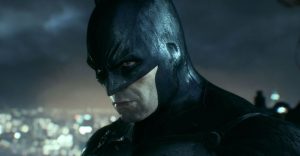Transformers: War For Cybertron: Kingdom Ending (& Multiverse Set Up) Explained

Transformers: War for Cybertron: Kingdom ended with a truce between the Autobots and the Decepticons, setting up Unicron as an even greater threat to the franchise. Netflix’s animated Transformers trilogy originally seemed to be a simple retelling of the origins of the Autobots and the Decepticons, adding more depth to iconic characters such as Optimus Prime, Megatron, and Bumblebee. But the final chapter, Kingdom, revealed it is far more creative than that.
Kingdom drew inspiration from the classic Transformers: Beast Wars cartoon, which introduced the Transformers’ time-traveling descendants – the heroic Maximals and the villainous Predacons. This naturally meant the already vast cast of the trilogy swelled, with the more familiar Robots in Disguise coming face to face with the likes of Optimus Primal, a new Megatron, and the manipulative Blackarachnia. It didn’t take long for time travel to move to the center of the story, with the heroes and villains forced to unite against enemies from this future timeline. The dependence on time travel made for a surprising end to the Transformers: War for Cybertron trilogy, with several character arcs taking unexpected directions. It also established the loose “rules” of time travel in the Transformers franchise, exploring the Multiverse.
Multiverses are all the rage in popular culture right now – even Buffy the Vampire Slayer has a Multiverse – so it isn’t really a surprise to see one used in Transformers as well. In this case, the idea of the Multiverse neatly explains all the countless reboots and relaunches because the various comics, animated series, and movies can all be set in subtly different timelines. But just how does this work, and what does it mean for the heroes and villains of the Transformers: War for Cybertron trilogy?
Transformers: War for Cybertron’s Time Travel Explained

Time travel lies at the heart of Transformers: War for Cybertron: Kingdom, and the series goes to some lengths to establish the “rules” by which it operates within the franchise. The principal method of time travel appears to be loosely inspired by the Marvel Cinematic Universe, where it is possible to travel through time and space by accessing the mysterious Quantum Realm, described as “a reality where all concepts of time and space become irrelevant.” The so-called “Dead Universe” plays a similar role in Kingdom, a strange and dangerous plane of existence that was introduced in IDW’s comic book run and has been reinvented for this series. Experiments with the Dead Universe are extremely unwise because it’s easy to get trapped there. There are hints of other, safer, ways to travel in time, but Kingdom never explores those in any detail, and it’s notable that they seem to be one-way – into the past, with no way to return.
The presence of a time traveler appears to create a new branch in the timeline, taking history in a different direction. This does not replace the original timeline, but rather exists alongside it, and using the Dead Universe it’s even possible to travel between the different branches. This model of temporal mechanics lies at the heart of Kingdom‘s story, explaining the motives of the various time-traveling factions.
Transformers: War for Cybertron’s Three Time-Traveling Factions

Transformers: War for Cybertron: Kingdom introduces three different time-traveling factions, from what appears to be the same alternate future timeline. Galvatron and Nemesis are future versions of Megatron and Optimus Prime, killed and resurrected by the planet-consuming entity called Unicron, transformed into his heralds. They wish to free themselves from slavery to Unicron and consequently have created a branched timeline so they can steal the AllSpark before it is destroyed. They believe they can use the AllSpark to kill Unicron – but they are aware taking the AllSpark will doom the Cybertron of the branched timeline they have created. Galvatron and Nemesis have been manipulating Megatron for quite some time, and they give him a golden disk with knowledge of the future, hoping he will lead them to the AllSpark. Unicron can perceive their actions even in the Dead Universe and in other timelines, so they are wary of acting openly until forced to do so.
And then there are the two Beast Wars factions. The Predacons are the descendants of the Decepticons, led by a new Megatron, who has named himself after the original and hero-worships him. They have found a way to travel back in time to prehistoric Earth, where they hope to ensure Megatron triumphs in his battle against Optimus Prime and thus never becomes Galvatron. It’s not clear how well the Predacons understand time travel – whether they believe they’re creating a branched timeline, or whether they believe they will change their own future. In truth, the Predacons’ version of Megatron isn’t really that great a planner, so he may not be entirely sure himself.
They were pursued back to prehistoric Earth by the Maximals, the descendants of the Autobots, who seek to stop them from changing the past. Again, it’s unclear how well the Maximals understand time travel, but apparently, they and the Predacons were locked in battle on Earth for quite some time before the Autobot and Decepticon spaceships crash-landed; they’ve almost wiped one another out already. The Maximals are initially wary of allying with the Autobots but ultimately commit themselves to creating a new timeline, one in which they will live side-by-side with Optimus Prime and his fellow heroes.
Why Megatron Betrays Galvatron in Transformers: War for Cybertron

Galvatron and Nemesis are forced to step out of the shadows in order to claim the AllSpark, although they intend Megatron to be the one who uses it – they believe Unicron would sense the moment they set eyes upon the AllSpark’s power, and he would destroy them before they could do the same to him. The Transformers unite against Galvatron and Nemesis, and initially, Megatron is uncertain, watching as he tries to figure out which side to take. In the end, he concludes he will be nobody’s slave, nobody’s pawn, and so he betrays Galvatron.
The Megatron of Transformers: War for Cybertron is an egomaniac, but he is devoted to Cybertron in his own way, and he is aware using the AllSpark to kill Unicron would drain it of all power. The AllSpark is the life-force of Cybertron, and so by using it against Unicron he would be dooming his homeworld in this timeline. That is something Megatron cannot abide.
Why The War For Cybertron Ended – But Will Begin Again

In Transformers: War for Cybertron, the conflict between the Autobots and the Decepticons has been driven by what can be called a Malthusian model of population growth. In 1798, Reverend Thomas Malthus published a book called An Essay on the Principle of Population, in which he suggested population growth would continue exponentially until there were insufficient resources to sustain the number of people alive on the planet; then, the population would be reduced by disease, famine, war or some other calamity. This is exactly what has happened on Cybertron, with the Autobots and Decepticons warring over population and resource pressure. Tragically, when the battle against Galvatron and Nemesis is over, both Megatron and Optimus Prime recognize that is no longer an issue; the world has been ravaged by the absence of the AllSpark, and there are precious few Transformers left. The two sides call a truce, going their separate ways. But, strikingly, Megatron implies he believes this to be a temporary state of affairs; a Malthusian to the core, he is confident population will grow once again to the point where the war breaks out. The truce may well last for millennia, but it will not last forever.
Unicron is More Dangerous After Transformers: War for Cybertron

The final scenes of Transformers: War for Cybertron: Kingdom are a glimpse into the original timeline, with Nemesis and Galvatron transported to Unicron’s side at the moment of their deaths. Unicron is essentially the Transformers equivalent of Marvel Comics’ villain Galactus, a gigantic being who consumes entire worlds; but where Galactus is driven by his appetite and plays a crucial role in the balance of life and death, Unicron is a malevolent entity. He appears to destroy Galvatron and Nemesis for their treachery, but not before telling them they have given him an idea. It is likely Unicron now intends to use time travel to his own advantage – meaning Transformers: War for Cybertron: Kingdom may have ended by unleashing a new Unicron on the entire Multiverse.
About The Author


















